|
★ Green Mangrove
「Mangrove」 are woody plants that grow in the estuaries of tropical and subtropical coastal areas. The Chinese name of the mangrove is derived from the fact that the mangrove plant contains a large amount of tannins and is oxidized in the air to form a red color, so it is called 「Mangrove」. Mangrove plants have evolved into special forms such as viviparous, salt glands and gas roots in order to adapt to the strong coastal winds and high salinity.
|
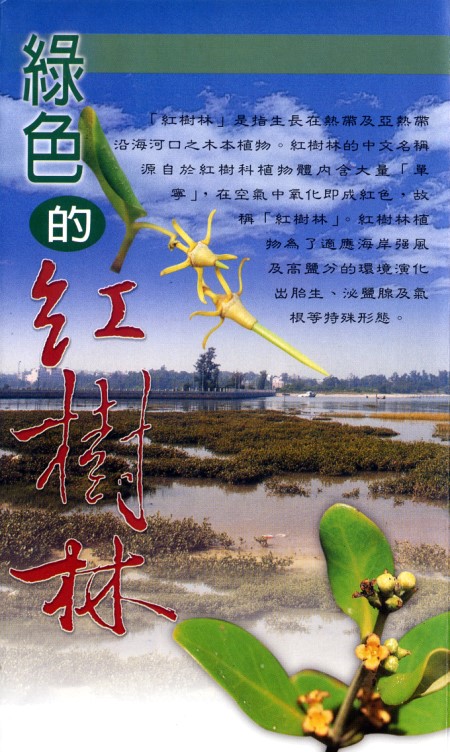 |
| |
|
★ Mangrove Plants in Kinmen
There are about 60 mangrove plants in the world. Due to the low temperature in winter, the golden mangrove plants are only four kinds of water pens, sea bream, tung tree and rat cockroach. Jinmen is only 10 kilometers away from Xiamen Bay and more than 200 kilometers away from Taiwan. There is no Tonghua tree in Taiwan. In terms of plant composition and geographical location, Jinmen mangrove plants should originate from the coastal areas of Fujian, not from Taiwan.
|
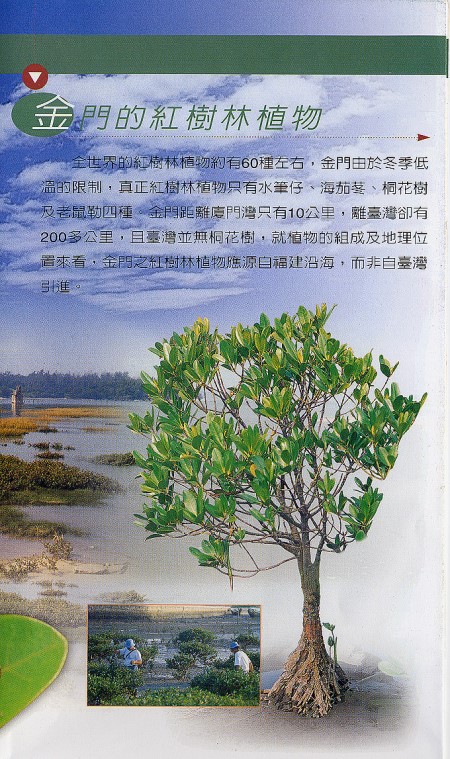 |
| |
|
★ Kandelia candel Druce
Evergreen small trees, leafy leathery opposite, flowering period from June to July, flowers are white when blooming. The fetal seedlings are matured from December to April of the following year, and the mature embryonic seedlings are about 10 centimeters long. The gas roots occur from the dry base, and when they enter the ground, they support the roots, and they often rise to the ground to form the roots. When this species matures, the hypocotyl is reddish-brown, and looks like an eggplant. The mainland is called "Kandelia", and it has the strongest cold resistance in mangrove plants.
Jinmen used to introduce Kandelia from the Danshui River mouth in Taiwan in the Republic of China in 68 years. However, in terms of its distribution in the Kinmen area, Kinmen should have a native Kandelia.
|
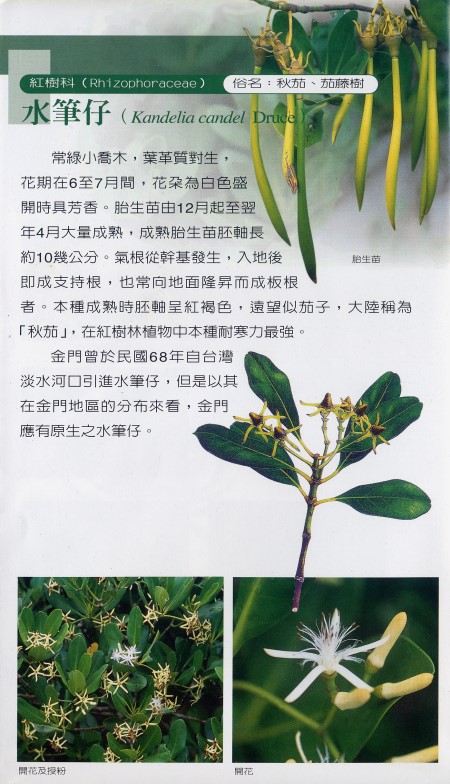 |
| |
|
★ Acanthus ilicifolius L.
Herbaceous plants with woody stems, about 1 to 2 meters high. The leaf leather cross is opposite, the flowering period is from January to May, the flowers are white and purple, and each of the four flowers is a group, which can reach 20 groups.
|
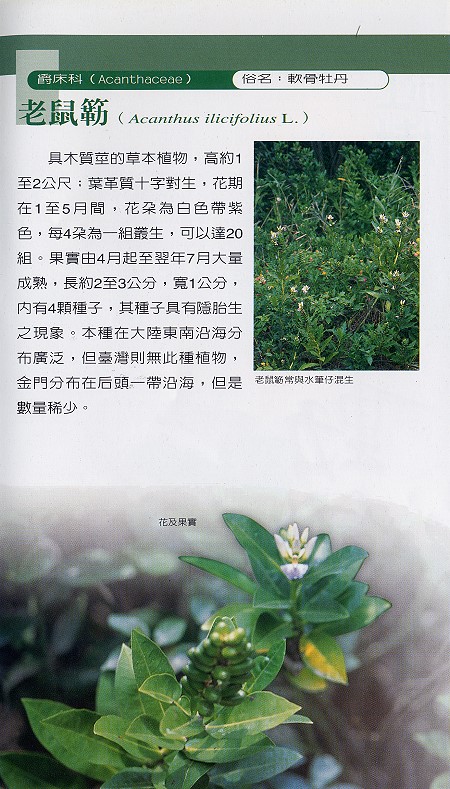 |
| |
|
★ Avicennia marina (Forsk.) Vierh.
Evergreen trees, whose high growth is greatly affected by the salt and wind waves of the trees, can be from shrubs to large trees. The leaves are leathery, and the orange-yellow clusters are clustered on the top of the branches; the capsules are broadly elliptical, and the flowering period is from May to July. The fruit matures from September to October and has a phenomenon of invisible birth. This species is called "white bone" in the mainland because the bark is grayish white. The golden quince of the Kinmen is shrub-shaped because the Kinmen has less shelter and high salinity because the sea bream is shrub-like.
|
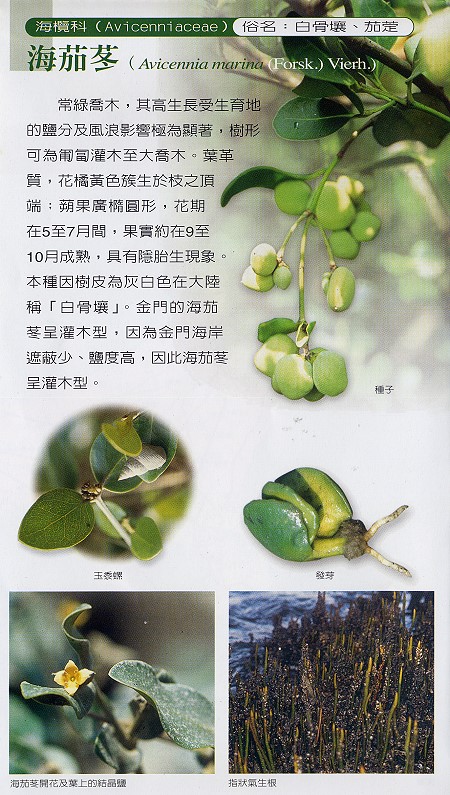 |
| |
|
★ Aegiceras corniculatum (Linn.) Blamco
Evergreen shrubs or small trees, 1.5 meters to 4 meters high. The flower is white, the flowering period is from January to April every year, the fruit is from 5 to 10 months, and the fruit is 3 to 5 cm long, which has the phenomenon of inborn birth.
|
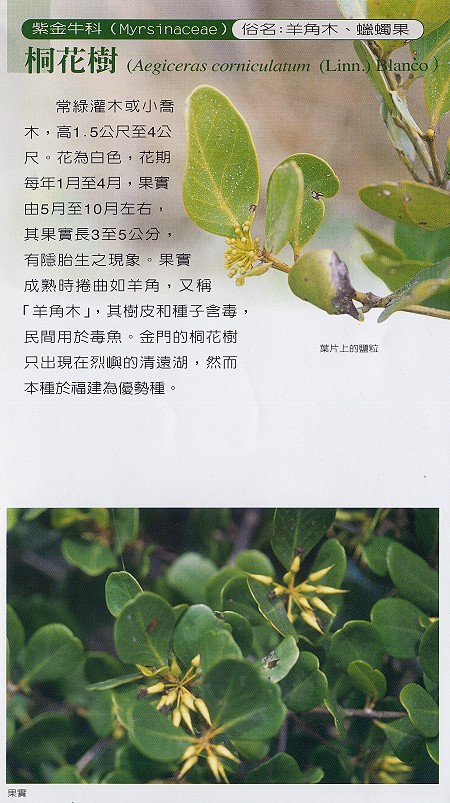 |
| |
|
★ Viviparity of Kandelia candel Druce
Flower buds → flower buds → flowering → pollination results → hypocotyls → fetal seedlings → small trees.
|
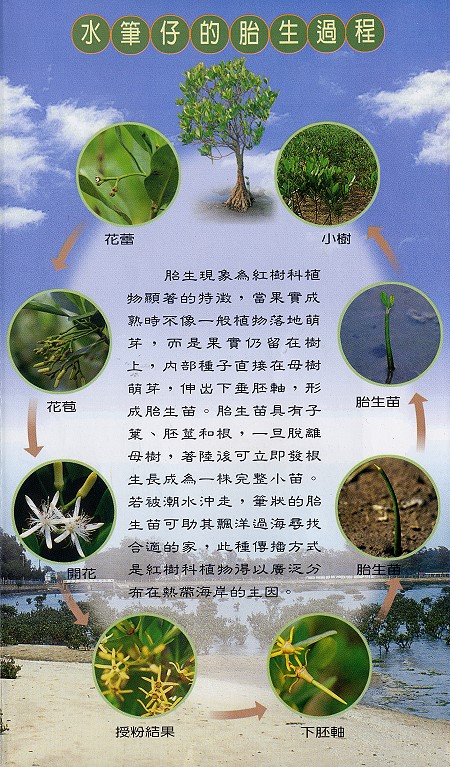 |
| |
|
★ Mangrove Food Chains
The debris is broken down by small earthworms or algae.
|
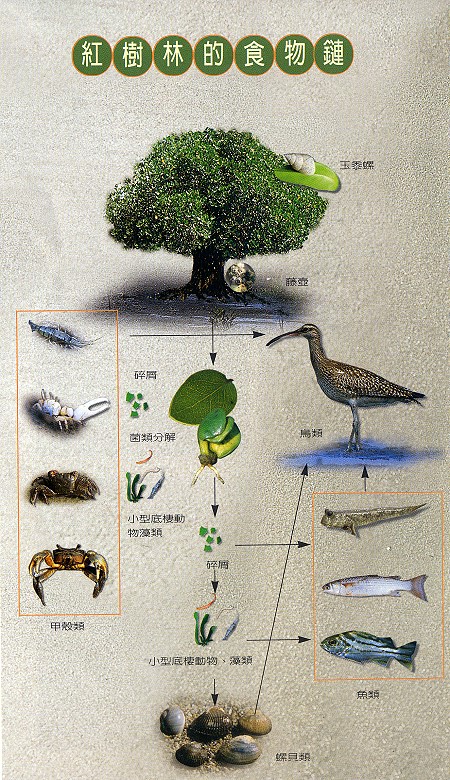 |
| |
|
★ Mangrove Associates
Refers to plants that occasionally appear in mangroves or forest gardens, but do not become dominant species. It has the characteristics of resistance to dryness, moisture resistance and salt tolerance. The bitter blue which is accompanied by the cigars in Jinmenpu is a rare plant.
|
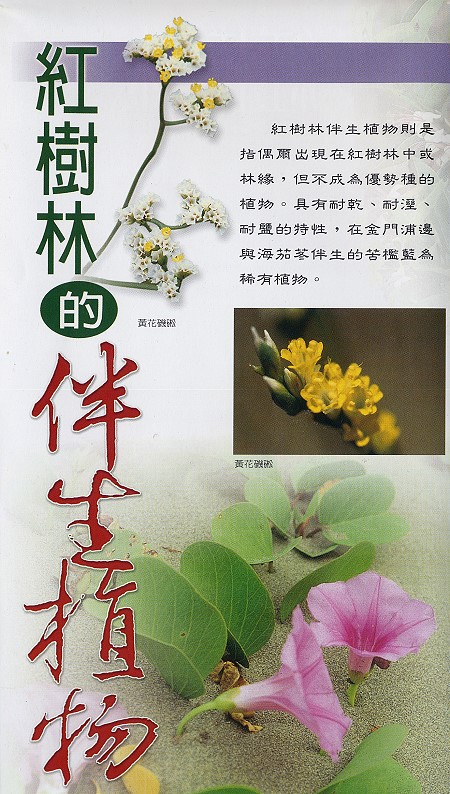 |
| |
| |
| |
| |
|
★ Wildlife among Mangroves
For animals, mangroves not only provide a variety of habitat types, but also the main source of food. The vast intertidal space between the Kinmen and the muddy land that still accumulates after the ebb tide, breeds a large variety of benthic organisms, and attracts migratory birds to eat for the winter. We protect the mangroves as the many habitats that are inhabited here.
|
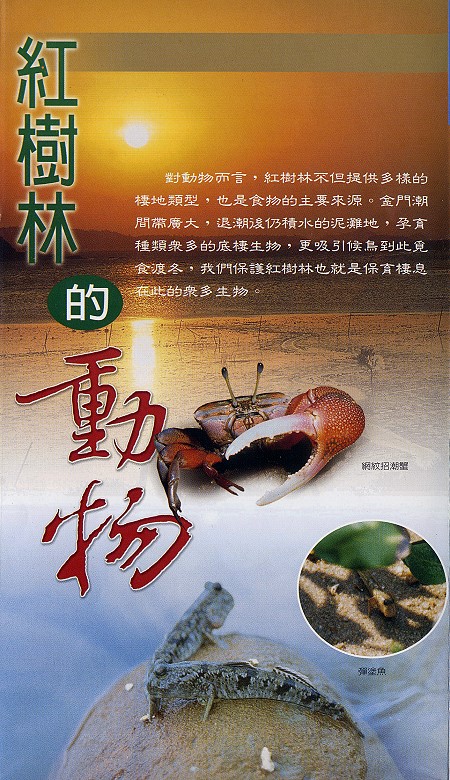 |
| |
| ★ Fishes, shellfishes and others |
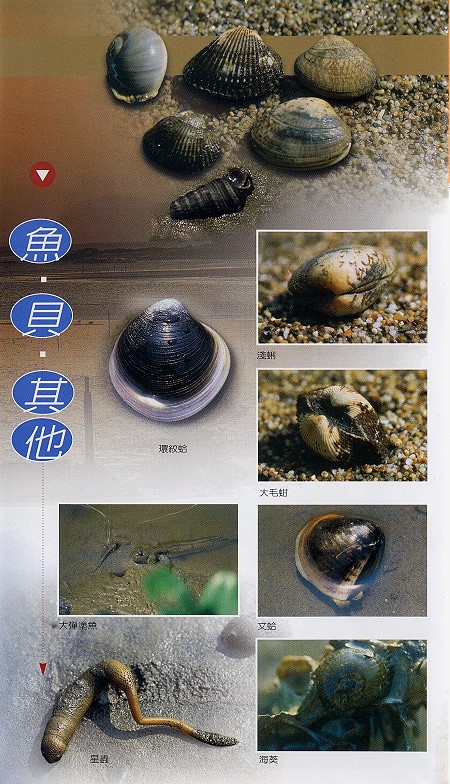 |
| |
| ★ Crabs |
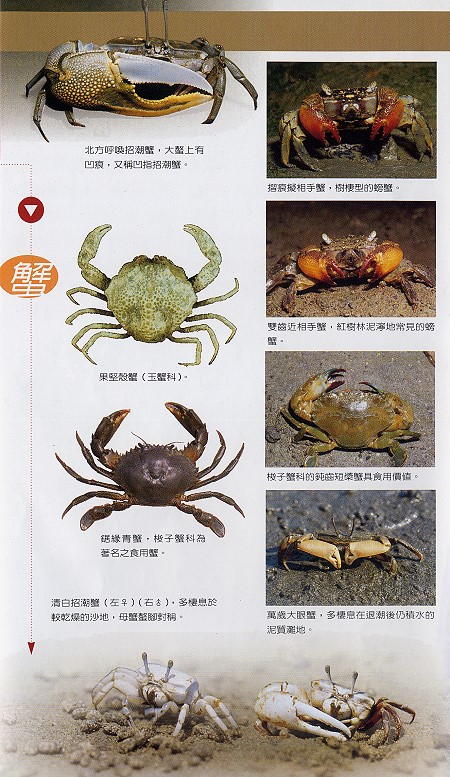 |
| |
| ★ Birds |
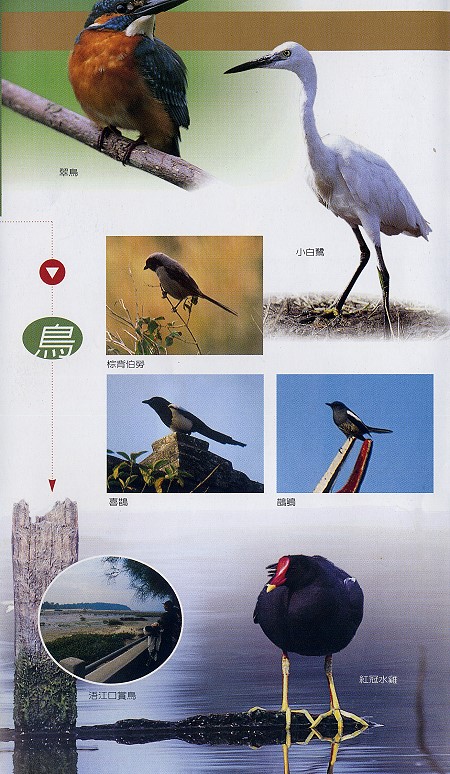 |
| |
|
★ Notifications on Mangrove Observation
1. Determine the tide time:
In general, the best observation time is three hours after the full tide. Because the tide has receded, the creatures such as crab, shellfish, and shellfish are active, but when the tide is one hour, it is best to return. The place to go to the beach, because the tide intrusion is very fast, you may be caught off guard.
2. Appropriate clothing:
For field observations, a hat that can be hidden is a must, clothing selection is resistant to dirt; comfort and color neck can be better matched with the local environment. Since the mangrove swamp soil is extremely muddy, it is best to go with rain boots.
3. Good illustrations and telescope assistance:
Wild birds, shellfish, crabs and plant illustrations are essential tools for exploring the mysteries of mangrove forests.
|
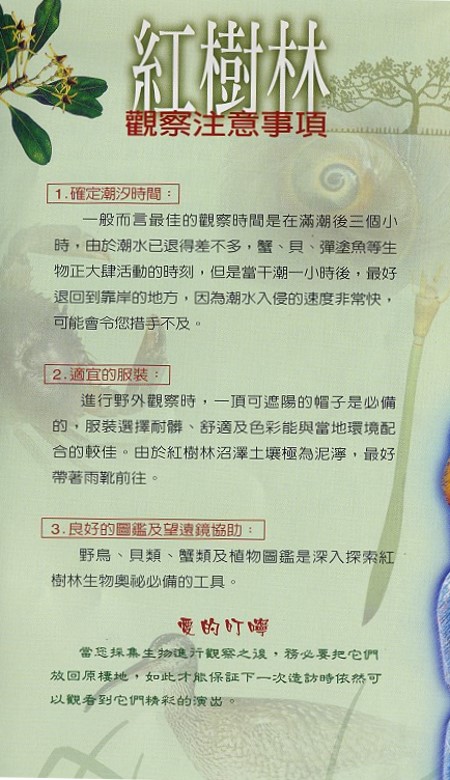 |
| |
|
★ Conclusion
The Kinmen, formerly known as "Pazhou", consists of 19 islands scattered on the outer seas of Xiamen, with a coastline of more than 100 kilometers. The Kinmen intertidal zone is rich in vast marine products. It can be proved by the Bellows of the Guoguodun 6,000 years ago. The coastal culture of Kinmen is still prevalent.
Mangroves are important coastal fisheries in the world. Although they are only scattered in Kinmen, they have contributed greatly to the local coastal ecology.
|
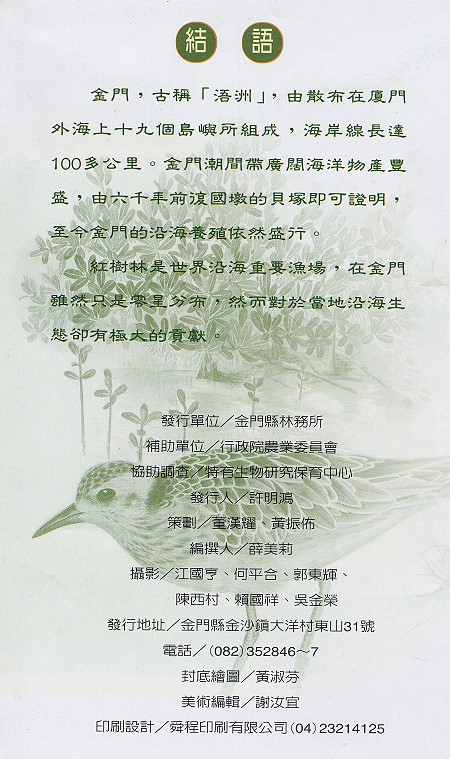 |